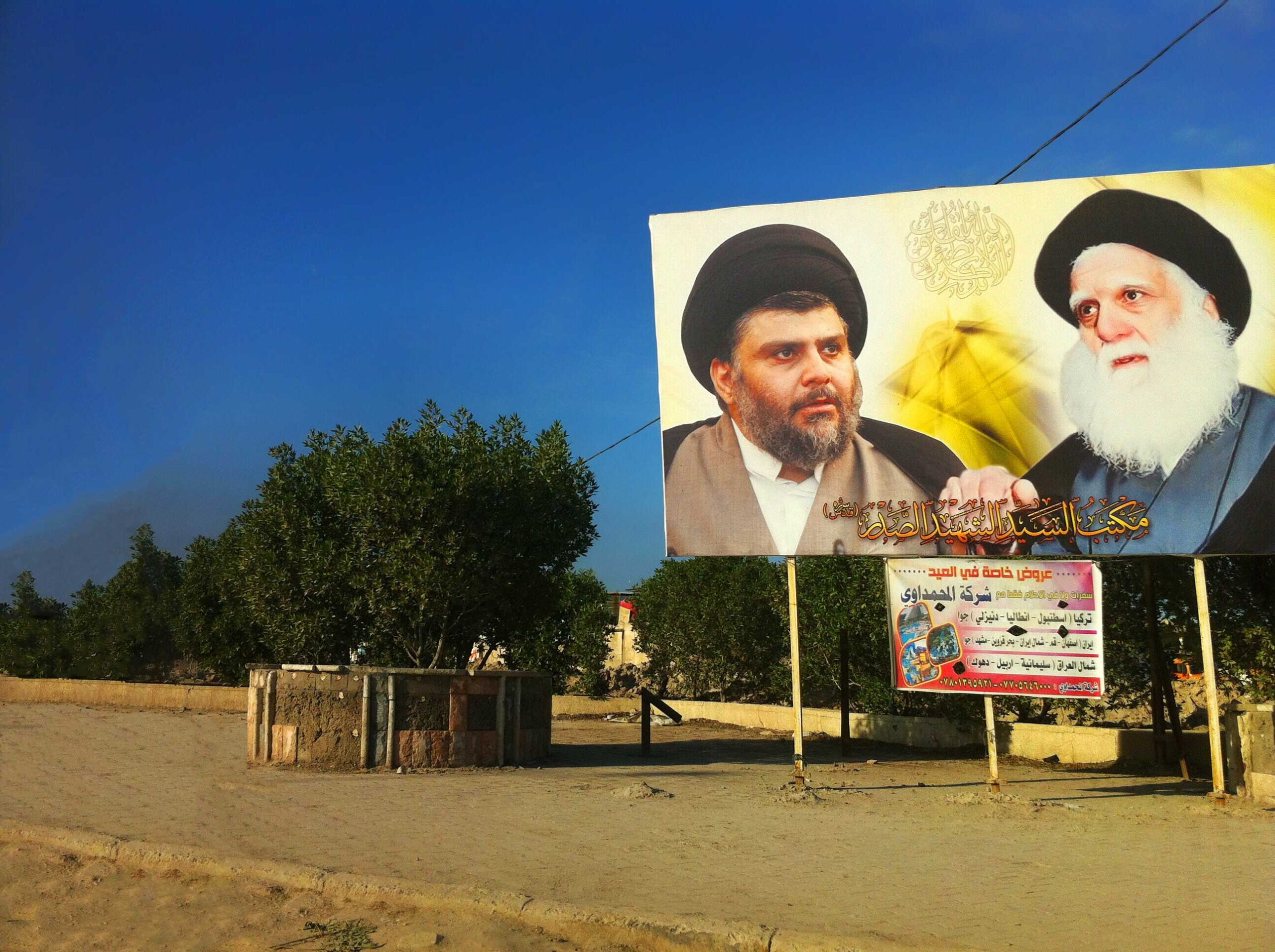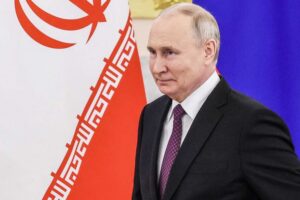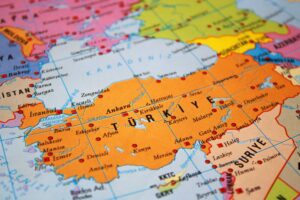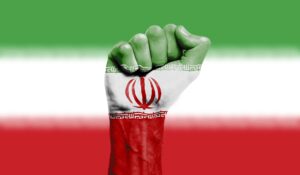On 29 August 2022, Muqtada Al-Sadr, Iraq’s Shi’ite-nationalist leader, announced his permanent retirement from Iraqi politics. One of the major factors that led to this announcement was the decision by Sayyid Kadhim Al-Haeri, the Grand Ayatollah and the spiritual leader of the Sadrist Movement, to withdraw his support from Muqtada. While this is not the first time that Muqtada has submitted to the decree of a Grand Ayatollah (Maraji), it is imperative to understand the clergy’s influence over Shi’ite politics across the world, particularly in Iran and Iraq.
Shi’ite Maraji have continued to exercise their powers since the disappearance of the 12th Imam in 880 A.D.
Religion, Politics and Maraji
Unlike the Sunni clergy, Shi’ite clergy follows a hierarchical structure. The highest rank in that structure is that of Maraji, the individuals who regulate community affairs in the absence of the 12th Shi’ite Imam. Traditionally, the rank of Maraji is granted in the religious seminaries of Najaf (Iraq) and Qom (Iran) – the two highest seats of learning in Shi’ite Islam. While the former has almost 800 years of legacy, the latter was only revived in the early 1920s. Maraji would act as a representative of the 12th Imam during the latter’s occultation period and would exercise authority over community affairs – the concept which is now popularised as Wilayat e-Faqih (Guardianship of the Jurist). Shi’ite Maraji have continued to exercise their powers since the disappearance of the 12th Imam in 880 A.D. and have enjoyed the popular support of the masses.
In modern history, this can be observed through the Tobacco Movement of Iran, which took place between 1890-1892. The British monopoly over the tobacco industry was widely considered by Iranians to be imperialistic in nature. As the Qajar Empire kept providing concessions to the British, then-Grand Ayatollah Mirza Hasan Sherazi issued a religious decree prohibiting the use of tobacco[i]. The decree had such a strong impact that it collapsed the British monopoly over tobacco revenues. Another instance was the Constitutional Revolution of Iran (1905-1911), where the religious clergy forced the Shah of Iran to establish the Iranian Parliament and delegate his own powers. In the case of Iraq, the role of Grand Ayatollah Taqi Sherazi in the revolt of 1920 was pivotal[ii]. His religious decree in favour of anti-colonial resistance was widely accepted and supported by the senior clergy of Najaf and Karbala. The ‘1920 Revolt of Iraq’ forced the British to hand over rule to Iraqis, first by creating the Council of Iraq and then establishing the monarchy of King Faisal I in 1921.
After the first quarter of the 20st century, thanks to significant advancements in technology, the Maraji were able to exercise a more transnational influence. Grand Ayatollah Sayyid Hussain Borujerdi (1875-1961) is widely considered to be the first international Maraji, followed by Grand Ayatollah Muhsin ul Hakim (1889-1970). However, after the death of Hakim, two senior clergymen rose to prominence, wielding similar influence and status: Grand Ayatollah Khomeini (Iran) and Grand Ayatollah Khoe’i (Iraq). From there onwards, the differences between Najaf and Qom came to light, primarily on Wilayat e-Faqih. Khoe’i adopted the traditional Shi’ite political thought of “quietism” and the belief that the Maraji would only exercise his powers in religious domains for the welfare of the community. It was also true as despite being active in Tobacco Movement, Constitutional Revolution and Iraqi Revolt, the Shi’ite clergy didn’t participate in the following political proceedings. Hence, what the clergy reflected was the passive stance on assuming the political authority. Khomeini, on the other hand, advocated for the active participation of the clergy in the politics. According to his view, clergymen are the rightful persons in establishing the ‘Islamic government’ and the Maraji are the legitimate heirs of the 12th Imam, who may exercise the Imam’s power as his viceroys[iii]. Therefore, what emerged after the Iranian Revolution were the two parallel brands of Shi’ite political thought. Many scholars tend to believe that Khoe’i’s opposition to Khomeini simply discredits the Iranian version of Wilayat e-Faqih. Others, however, argue that due to Iraq’s status as a Shi’ite minority country, unlike Iran where Shi’ites are ~85-90 percent, and the political circumstances surrounding Saddam Hussein’s anti-Shi’ite repression, Khoe’i’s opposition to Khomeini was, in fact, pragmatic by avoiding a Shi’ite clash with Saddam’s regime.
The common feature of Najaf and Qom-based Maraji is their opposition to foreign occupation, secularism and Western values.
Maraji in the 21st Century
Since the emergence of such variation within the global Shi’ite clergy, the Iraqi and Iranian models have remained distinct. The Maraji’s power remained divided between Najaf and Qom. Both Khoe’i’s and Khomeini’s successors, Grand Ayatollah Sayyid Ali Sistani and Grand Ayatollah Sayyid Ali Khamenei, respectively, continued to propagate their predecessors’ legacies. This is not to say that other Maraji virtually vanished, but the following and influence which both Sistani and Khamenei enjoyed surpassed the total number of followers of other Maraji. One distinct feature of Shi’ism is the liberty of the individual to follow different Maraji simultaneously on different issues and, therefore, the followings of different Maraji often intersect with each other. It also signifies the transnational linkages between the Maraji through their common followers.
Despite having divergences on the interpretation of Wilayat e-Faqih, the common feature of Najaf- and Qom-based Maraji is their opposition to foreign occupation, secularism and Western values. While Khamenei-led, Qom-based clergy is quite vocal in its opposition to the West, the Najaf-based scholars under Sistani have also frequently demonstrated their muted opposition to the West. Foremost was Sistani’s opposition to the US during the post-Saddam period. Sistani preferred the direct elections in 2004 before the transfer of power from the US-led interim government to Iraqi people[iv]. His stance could be due to two perceptions; one was the suppressed Shi’ite majority that could benefit from the elections while the second was the fear that a non-elected Iraqi government under the caucus system would lead to greater US influence over Iraqi affairs. On the other hand, over the years, Sistani’s maintained contact with Khamenei. Two instances reveal the deep coordination between Sistani and Khamenei. First, over the issue of Muqtada al-Sadr in 2004, Khamenei personally asked Sistani to interfere in order to avoid ‘Shi’ite bloodshed’ over which Sistani responded. Secondly, in January 2020, Sistani offered condolences to Khamenei when a US drone strike assassinated Iranian General Qassem Soleimani. Both of these instances display the transnational linkages between Shi’ite clergy and their common opposition to the US[v].
These examples visibly point towards the transformation in Iraqi Shi’ite political thought. From practicing ‘quietism,’ Sistani has shown ‘quasi-activism’ in the political domain. Nonetheless, Sistani’s presence in Iraq is beneficial to the US goal of keeping Iran’s influence in check. Correspondingly, Iranian authorities have approached Iraq with caution due to Sistani’s status as not only Iraq’s religious authority but also as the most-senior Maraji worldwide[vi]. However, over the years, Iran still has managed to wield such influence inside Iraq that Grand Ayatollah Haeri openly asked his followers to support Khamenei and seek his guidance in community affairs[vii].
The Future of Maraji inside Iraq
The institution of Maraji holds the key for Iran to further its influence.
Traditionally, the Qom-based clergy supports Khamenei, and the Najaf-based clergy supports Sistani while sharing mutual respect. In a global context, Sistani enjoys the rank of the ‘Supreme Religious Authority’ of the worldwide Shi’ite community, owing to his association with Najaf and his relatively senior age (at ninety-three years old, he is ten years older than Khamenei). Solely out of respect, no clergyman challenges Sistani’s position, however, unlike Khamenei’s position, which is constitutionalised and supported by the Iranian state’s institutions, Sistani’s rank lacks institutionalisation as he holds no political office.
Furthermore, as the head of the state, Khamenei has stretched his influence worldwide, which has likewise resulted in an expansion of Iranian influence. In fact, the spiritual leaders of Bahraini and Nigerian Shi’ite communities, Grand Ayatollah Sheikh Isa Qassem and Ayatollah Sheikh Ibrahim Zakzaky, respectively, both share deep bonds with the Qom seminary and consider Khamenei to be their leader. In Lebanon, as well, Hezbollah considers Khamenei to be its spiritual leader and follows his edicts. More significantly, in the eastern provinces of Saudi Arabia where the Shi’ites are in the majority, Iran’s influence and Khamenei’s following are immense. The rise of pro-Iran Sheikh Al-Nimr and his execution by Saudi authorities in 2016 only exacerbated the situation in Shi’ite dominated regions of the kingdom. Although, the current Saudi Shi’ite leader, Sheikh Hassan Al-Saffar, is conciliatory and moderate in his approach, decades of marginalisation and discrimination have led to the encroachment of Iranian influence inside Saudi Arabia’s Shi’ite community[viii]. Similarly, across the Indian subcontinent, the influence of the Iranian Revolution has provoked Shi’ite political activism. In Pakistan, the ‘Shia Ulema Council’ shares deep ties with the senior clergy of both Iran and Iraq. Its current head, Allama Syed Sajid Ali Naqvi, is the member of the executive council of the Iran-based ‘Ahlul Bait World Assembly,’ the platform the global Shi’ite clergy use to coordinate their affairs. In India, on the other hand, Khamenei’s following is strong in the Ladakh region through the Imam Khomeini Memorial Trust (IKMT), while various senior Indian-Shi’ite clergymen like Maulana Kalbe Jawad and Ayatollah Aqeel ul Gharavi have been in close association with Khamenei and Qom-based clergy.
The triumph of Khomeini’s concept of Wilayat e-Faqih in Iran led to the mobilisation of Shi’ite masses and the rising influence of Shi’ite clergy across the region. Iran, therefore, provides the opportunity for global Shi’ite clergy to assert their authority and strengthen Shi’ite populations that have traditionally remained politically alienated. The institution of Maraji holds the key for Iran to further its influence since the Khamenei’s following often overlaps with Iran’s influence in the region. While the Iranian Revolution has certainly empowered Shi’ite communities and clergy worldwide, it is also true that, in religious terms, Khamenei and Iran still lag behind Sistani’s global following.
Certainly, the Najaf-based clergy under Sistani has been successful in maintaining its distinctive status vis-à-vis Iran. Previously, Iran had tried to install Ayatollah Sayyid Mahmoud Hashemi Shahroudi in Najaf to assume leadership in the post-Sistani era, however, he died in 2018. Today, Haeri’s support for Khamenei once again aided Iran in asserting its influence inside Iraq and Najaf. One major feature from which Iran could benefit is the absence of any high-stature Maraji inside Najaf who could replace Sistani. Out of the ‘Four Greats of Najaf,’ Grand Ayatollah Saeed ul Hakim died in 2021 while the other two high ranking clergymen, Grand Ayatollah Basheer Najafi (Pakistan) and Grand Ayatollah Ishaq Fayyadh (Afghanistan), face hurdles due to their advanced age and non-Iraqi ethnicity. It is speculated that in the post-Sistani period, while Najaf would be struggling amid a successorship crisis, Iranian inputs would be paramount. Already Iran enjoys wide influence over Iraq’s political and security apparatus through various mid-rank clergymen like Ammar Al-Hakim, Qais Al-Khazali and Akram Al-Kaabi, all of whom lead their respective political and militant factions, and favour Khamenei’s authority.
Finally, various Ayatollahs like that of Muhammad Baqir Al-Irawani (a close aide to Sistani), Riyad Al-Hakim (Iranian-based Iraqi scholar) and Hasan Al-Jawahiri are the prominent candidates to lead the post-Sistani era – yet none of them have yet acquired the status of Maraji. Therefore, given such challenges, it remains to be seen whether Iran will succeed in reshaping Najaf’s discourse to its benefit, or if Najaf will persist as a distinctly independent seat within global Shi’ism.
[i] Nikki R. Keddie and Rann Richard, Modern Iran: Roots and Results of Revolution, (New Haven: Yale University Press, 2003), 61-62.
[ii] Yaphe, Judith, “Everyone an Iraqi, Everyone a Victim: Two Views of Identity in Iraq’s First Hundred Years,” Bustan: The Middle East Book Review, 5, No. 2 (2014): 105-123.
[iii] Sadeghi, P, and Jack Watling, “The Constraints of Infallibility: The Pronouncements of Iran’s Supreme Leader,” The RUSI Journal, 165, No. 3 (2020): 84-94.
[iv] Rahimi, Babak, “Ayatollah Sistani and the Democratization of Post-Ba’athist Iraq,” United States Institute of Peace, Special Report 187 (Washington DC), June 2007. https://www.usip.org/sites/default/files/sr187.pdf.
[v]Kalantari, Mohammad R., and Ali Hashem, “Washington Doesn’t Understand Shiite Clerics in Iran or Iraq”, Foreign Policy, 30 January 2020.
https://foreignpolicy.com/2020/01/30/washington-doesnt-understand-shiite-clerics-in-iran-or-iraq/.
[vi] Teymoori, Ali, “Ayatollah Khamenei’s Letter to Ayatollah Sistani over Muqtada Al-Sadr and Iraq Crisis,” Ijtihad Net, June 12, 2018.
http://ijtihadnet.com/ayatollah-khameneis-letter-to-ayatollah-sistani-over-muqtada-al-sadr-and-iraq-crisis/.
[vii] Al-Sulami, Mohammad, “Al-Sadr’s Dilemma as Cleric Urges his Followers to turn to Iran,” Arab News, September 05, 2022.
https://www.arabnews.com/node/2156731.
[viii] Alrebh, Abdullah F., interview by European Eye on Radicalization, Radical Shiism and Iranian Influence in Saudi Arabia, 29 March 2021.
https://eeradicalization.com/radical-shiism-and-iranian-influence-in-saudi-arabia/.

















